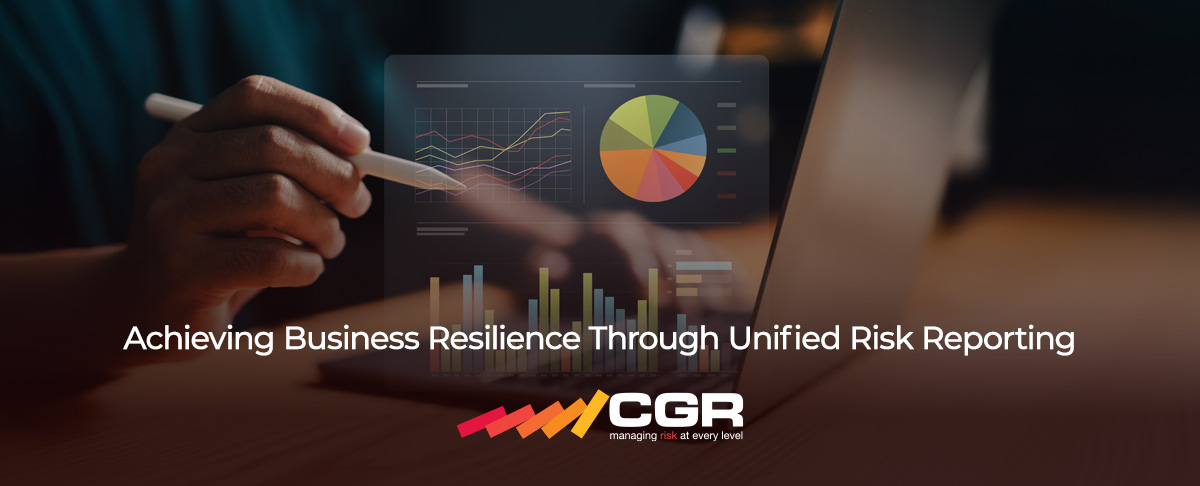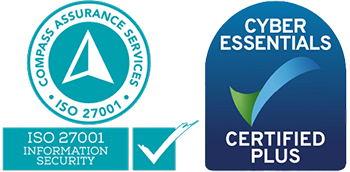Achieving Business Resilience Through Unified Risk Reporting
Imagine you are on a plane, and the pilot has access only to engine data, but no information about fuel levels, weather conditions, or air traffic. That scenario is a disaster waiting to happen. Unfortunately, this is precisely what occurs in many organisations when risk reporting is fragmented across business units.
Risk Managers operating in sectors such as government, mining, transportation, and nuclear energy frequently contend with siloed Risk Management. Different departments track risks separately, using their own methods, definitions, and reporting structures. The result is a fragmented approach that creates blind spots and prevents organisations from gaining a comprehensive understanding of their risk exposure.
The good news is that breaking down silos is not only possible but essential. Achieving this requires a cultural shift towards collaboration, integration, and strategic risk visibility, underpinned by strong risk data governance.
The Dangers of Siloed Risk Reporting: Real Consequences
Case Study: The Mining Disaster That Could Have Been Prevented
A large mining operation’s environmental team identified early signs of soil erosion near an active excavation site. They documented it within their internal system, but the information never reached the engineering team, who continued blasting in the area. Months later, a landslide buried millions of pounds worth of equipment and caused a significant environmental spill, leading to regulatory penalties and public scrutiny.
Had the risk been shared across the organisation, mitigation measures could have been implemented, saving the company from financial, operational, and reputational damage. This is a clear example of how siloed Risk Management results in avoidable failures.
The Ripple Effect of Risk Blind Spots
A fragmented approach to Risk Management extends beyond inefficiencies, it actively increases risk exposure. When departments fail to share insights, organisations experience inconsistent risk assessments, where one department considers a risk low while another identifies it as critical. Interdependencies are often missed, such as procurement identifying a supply chain issue that is not recognised by operations until disruption occurs. Delayed responses make mitigation efforts more difficult, and regulatory non-compliance becomes a significant concern, particularly in industries that mandate an integrated Risk Management approach. A lack of cohesion in reporting could result in significant penalties. Furthermore, compromised risk data integrity weakens decision-making and reduces leadership’s ability to respond effectively.
Breaking Down Silos: A Strategic Advantage
Risk Management is not just about avoiding disasters, it is about enhancing decision-making at every level. Organisations that successfully unify risk reporting benefit from a comprehensive, organisation-wide risk perspective that enables informed leadership decisions. Strategic planning improves through greater clarity on vulnerabilities and opportunities. Faster response times become possible as cross-departmental collaboration allows for real-time risk data visibility and mitigation. Compliance with regulatory frameworks is strengthened, and risk data governance ensures accuracy and reliability in risk reporting.
ISO 31000 and COSO Enterprise Risk Management: Roadmaps to Integration
ISO 31000 provides a structured methodology for identifying, assessing, and managing risks consistently across an organisation. By implementing this framework, companies create a standardised process that applies across departments, ensuring uniform scrutiny of all risks. Building on this foundation, the COSO Enterprise Risk Management framework goes a step further by embedding Risk Management directly into strategic planning and performance measurement. It promotes a holistic view of risk, ensuring that interdependencies are recognised and that critical information is not overlooked.
Together, these frameworks establish a foundation for transparent, collaborative, and effective Risk Management, allowing organisations to align risk oversight with broader business objectives.
Practical Steps for Risk Managers to Unify Risk Reporting
Unifying Risk Management does not require an immediate, large-scale transformation. A crucial first step is establishing a cross-functional risk committee, bringing together representatives from all business units. Regular discussions on key risks, trends, and mitigation strategies will foster organisation-wide risk awareness. To ensure consistency, it is essential to standardise risk terminology and reporting across teams by aligning with a unified Risk Management framework that includes standard definitions, reporting structures, and assessment methodologies.
Implementing integrated Risk Management Software enables all business units to document and access risk data in a single, real-time risk data system. This not only provides leadership with a clear, enterprise-wide view of risk exposure but also strengthens risk data integrity by ensuring accuracy and consistency in risk reporting. Fostering a culture of risk collaboration is equally important, as silos persist due to ingrained habits. Risk Managers should promote open discussions on risk, encourage teams to share insights, and reward collaborative risk management behaviours.
Finally, risk considerations should be fully integrated into business objectives. Risk visibility should extend to board-level discussions and corporate performance reviews, ensuring alignment between risk mitigation and business growth. By embedding Risk Management within strategic decision-making, organisations enhance their ability to proactively manage risk and seize opportunities.
Final Thoughts: Risk Visibility as a Competitive Advantage
Unifying Risk Management is not merely about regulatory compliance or operational efficiency, it is about resilience. Organisations that embrace integrated Risk Management are not only better equipped to mitigate threats but are also positioned to capitalise on emerging opportunities.
For industries such as mining, transportation, nuclear energy, and government, the cost of fragmented risk visibility is too great to ignore. Breaking down silos today will ensure that organisations remain proactive in an era of increasing uncertainty.
Strengthening risk data integrity, improving real-time risk data accessibility, and enforcing robust risk data governance are fundamental to achieving this transformation. The question for Risk Managers is clear: Are you ready to bridge the gaps? The future of your organisation depends on it.





